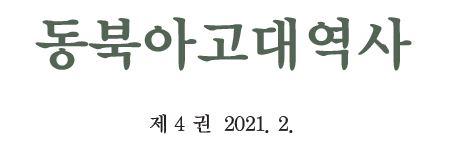
○ DOI
https://doi.org/10.47527/JNAH.2021.02.4.275
○ 저자
Pang, Min-Kyu(Korea National Maritime Museum)
○ 논문명
The Characteristics of Physical Anthropology on the Korean Residents During the Old Chosun Period (고조선시기 한반도주민의 체질인류학적 특징)
○ 목차
Ⅰ. Introduction
Ⅱ. Results of human bone analysis of rchaeological sites
Ⅲ. The Characteristics of Physical Anthropology in the Bronze Age residents
Ⅳ. Physical anthropological characteristics of Old Chosun residents
Ⅴ. Conclusion
○ 국문요약
A number of characteristics can be found in anthropological studies of the Bronze Age human skeletons excavated from the Korean Peninsula. In other words, from the Bronze Age to modern Koreans, the height and length of the index are the high head shape, the width and length of the upper face are the middle face of the index, and the other indices are somewhat continuous to modern Korean people. In particular, the skulls excavatedfrom northeastern China during the Old Chosun Period are closer to those excavated from the Korean Peninsula than other neighboring groups, which are believed to have been characterized by anthropological features of the Korean people throughout the Neolithic Age.
The characteristics of physical anthropology in Old Chosun residents are higher than those of the cranial bones excavated in Liaoning and Habuk provinces, and they are no different from those of modern Korean people. However, according to the cranial length and height index, the cranial bones excavated in Liaoning and Habuk province areas and the Korean Peninsula all represent high cranial bone like modern Koreans. On the other hand, the modern Chinese and Japanese have the most prominent physical and anthropological characteristics of the Korean people since Old Chosun. However, while the residents of Gilim province and the Korean Peninsula have short cranial like modern Koreans, the cranial bones excavated in Liaoning are different in that they usually have long and high cranial bones,
and the cranial bones excavated from the Habuk province area are very close to modern Korean people. Residents living in Liaoning, Gilim, and Habuk provinces during the Old Chosun Period all show high-head characteristics and do not differ much in form from modern Koreans. However, there is a limitation of comparative analysis when there is a controversy over the strength of Old Chosun and the number of human bones excavated is insufficient. Therefore, research related to physical anthropology, genetics, and archaeology should be conducted comprehensively in future research.
한반도에서 출토된 청동기시대의 인골 자료들에 대한 체질인류학적 연구에서 몇 가지 특징을 살펴볼 수 있다. 즉, 청동기시대에서 현대의 한국인에 이르기까지 높이ㆍ길이 지수의 높은 머리형과 위 얼굴 너비ㆍ길이 지수의 가운 얼굴형이고, 그 외의 지수(指數)들도 현대 한국 남자에 이르기까지 어느 정도 이어져 오는 모습을 보여준다. 특히 고조선 시기와 관련해 중국 동북지방 출토 머리뼈들이 다른 주변 집단들에 비해 한반도 출토 머리뼈들과 더 가까운 것으로 나타나는데, 이는 청동기시대의 머리뼈는 신석기시대의 머리뼈와 별 차이를 보이지 않으므로 신석기시대 이후 청동기시대를 거치면서 한반도 주민들의 대표적인 체질인류학적 특징들로 형성되었다고 판단된다.
고조선 주민들의 체질인류학적 특징은 요녕ㆍ하북 지역에서 출토된 머리뼈의 높이는 한반도와 길림지역에서 출토된 머리뼈보다는 높으며, 현대 한국 남자의 높이와 차이가 없다. 그러나 머리 길이ㆍ높이 지수에서 볼 때, 요녕ㆍ하북 지역 그리고 한반도에서 출토된 머리뼈들은 모두 현대 한국인처럼 높은 머리를 나타낸다. 반면에 현대 중국인과 일본인들은 가운 머리를 지니는 것으로 보아 높은 머리는 고조선 이래로 한반도 주민들의 머리뼈에서 보이는 가장 두드러진 체질인류학적 특징을 나타낸다. 그러나 길림성지역과 한반도에서 살던 주민들은 현대 한국인처럼 짧은 머리를 지닌 높은 머리임에 반해, 요녕성 지역 출토 머리뼈들은 주로 긴 머리에 높은 머리를 지닌다는 점에서 차이 가 있으며, 하북성 지역에서 출토된 머리뼈는 현대 한국 남자와 매우 가깝다. 고조선시기 요녕성ㆍ길림성ㆍ하북성 지역 및 한반도에서 거주했던 주민들은 모두 높은 머리의 특징을 보여주며, 현대 한국인들과 형태상으로 큰 차이가 나지 않음을 알 수 있다. 다만, 고조선의 강역에 대한 논란이 있고, 출토된 인골 개체의 수가 불충분한 상태에서의 비교분석이라는 한계가 있다. 따라서 앞으로의 연구에서 체질인류학과 유전학 그리고 고고학 등 인접학문 등과의 연계된 연구가 종합적으로 이루어져야 고조선 주민과 현대 한국인의 특징이 좀 더 분명하게 나타날 것이다.
Old Chosun, Bronze Age, Neolithic Age, Anthropology, Dongyi, Han, Dolmen, Skeleton, Stone Cist, Cranial Bones






